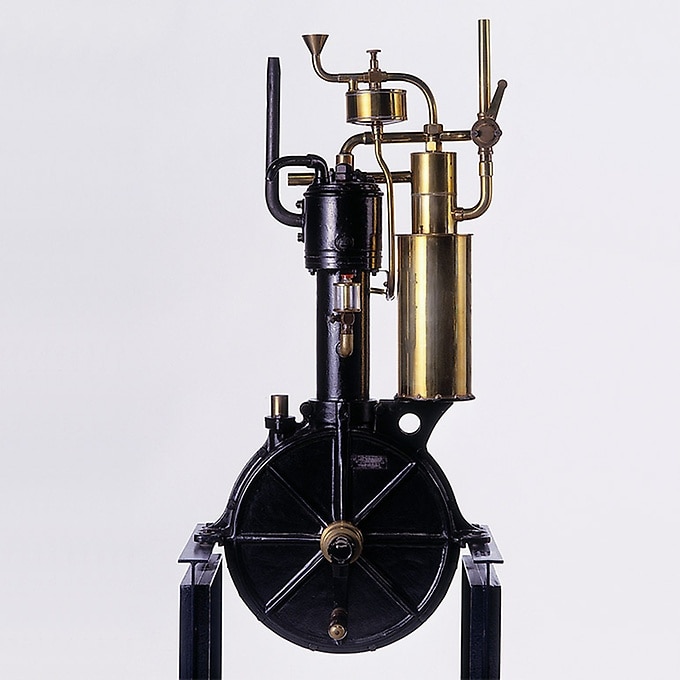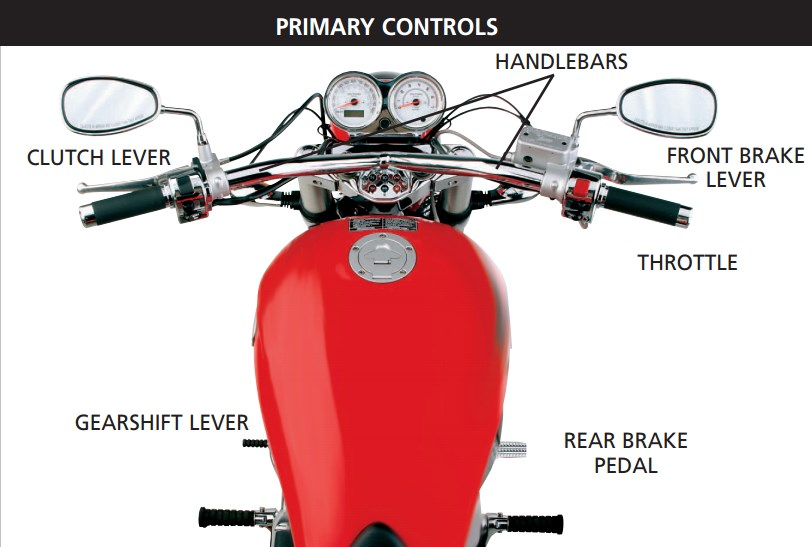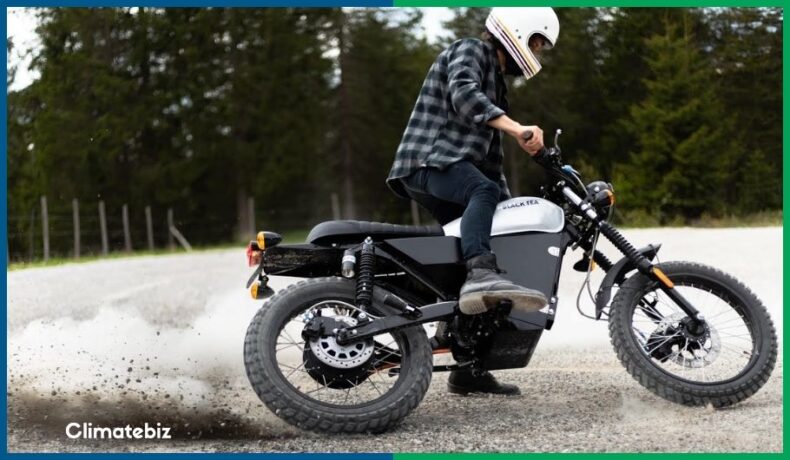Bike enthusiasts looking to buy an electric motorcycle will undoubtedly want their EV to come with a clutch and gears!
Some may even argue that the essence of motorcycling is the sound of the roaring IC engine and the continuous shifting of gears — it’s simply impossible to imagine a traditional motorcycling experience without these elements.
Sadly — for people who love the traditional motorcycling experience — most electric motorcycles do not have gears and clutches since electric motors provide continuous full power.
Nonetheless, electric motorcycle companies like Kawasaki are experimenting with gears and clutch systems.
Let’s dig deeper to determine whether an electric motorcycle has gears.
Table of Contents
How Does A Traditional Motorcycle Work?

Source: Mercedes-Benz
Before we go any further, let’s revisit a traditional motorcycle transmission system and look at how gears and clutch fit into the argument.
A bike has 5 essential components to control its speed
- An internal combustion engine provides the power to the drive train by burning fuel and producing mechanical energy that is then supplied to the flywheel, where the gear set is found.
- A throttle on its right-hand grip that’s responsible for increasing power (fuel burn) or the RPMs of the motorcycle. This is usually where the power switch is available in manual motorcycles.
- A clutch acts as a control mechanism that dissociates an engine flywheel with the gearbox during a gear shift. When you pull the clutch handle, the plates will dissociate, and there will be zero power transmission. Most of us are unaware of this because we usually drive automatic automobiles.
- A brake brings the vehicle to a standstill when accelerating through the disk brake mechanism.
- While driving, you shift gears “up” or “down” depending on what is required. The gear shifter is available on the left side near the pedal. Now, let’s examine what happens in a gearbox that helps increase speed on a motorcycle. A gearbox has different gear sizes (i.e., no of teeth on the gear)

Source: Motor Cycle World
A Bit More Detail
The following illustration shows how power is transferred from an engine to the driven chain system that drives the back wheel.

Engine power enters through the crankshaft to the transmission when the clutch is connected to the drive shaft. This drive shaft has gears like M1 and those adjacent to the gear.
When you are in the first gear, the drive shaft is connected to the driven shaft through C1 gear. The number of teeth in the drive and driven shaft control the drive shaft’s speed.
The formulae shown below might help you understand this.
Speed of drive shaft x Number of teeth M1 = Speed of driven shaft x Number of teeth C1

Source: Encyclopedia Brittanica
You can change gears through a gear system, i.e., at the bottom end of the chassis.
The gear-changing process involves the clutch system so that the driving and the driven shafts are disengaged. This disengagement stops the engine power from traveling to the drive shaft. Moreover, it lets you change the gears; else, the motorcycle will make a friction sound and not allow you to shift gears. (see the following video for more detail)
Please note: an IC engine converts linear inertia into torque for the crankshaft with the help of a piston connecting rod mechanism shown above.
This speed is slower than the rotational speed of a motorcycle’s wheels, which is why a gear system is used to amplify the speed as and when required.
How Does An Electric Motorcycle Work?
As previously mentioned, an electric motorcycle does not have the combustion engine that a traditional one has. Instead, these EVs engines are comprised of a motor driven by a rechargeable battery pack.
This is why this transport mode is much more environmentally friendly than others.
An electric motorcycle has essential components that dictate how it is driven. These include:
- An electric motor (like an alternator) is mounted near the back wheel. It’s responsible for providing the motorcycle’s power.
- A rechargeable battery that supplies the power to the electric motor.
- A throttle enables the provision of electricity to the motor — the more the throttle is rotated, the higher the power delivery to the engine.
- The chain/belt mechanism works similarly to a traditional bike that delivers mechanical energy to the back wheel.
Related Reading: 10 Most Affordable Electric Motorcycles in 2022
Do Electric Motorcycles Have Gears?
Now for the big question — does an electric motorcycle have gears?
By now, you know how a traditional and electric motorcycle works and why standard motorcycles have gears and clutch. Let’s explore how an electric bike differs.
As previously mentioned, electric motorcycles do not have combustion engines. Instead, they operate via a rechargeable battery-operated electric motor.
The electric motorcycle’s speed is controlled through the throttle, which controls the electric motor’s power, meaning gears are not required.
Electric Motorcycles With Gears Do Exist
Gears are an essential part of the transmission system that controls the speed of traditional vehicles. In a typical electric motorcycle, only one gear is engaged at all times, maximizing the wheels’ torque. There are, however, electric motorcycles with 3, 7, and 10 gears.
That said, the gears are not operated the same way as in a traditional motorcycle; they work like a regular geared bicycle. The gears will maximize the wheels’ torque required to power the vehicle. This helps conserve the power in the rechargeable batteries.
It is believed that having no gears might limit the speed of motorcycles. Still, recent introductions have proven these ideas wrong — Voxan Wattman is the fastest electric motorcycle in the world, with a top speed of 283 mph (or 455 kph) and an acceleration of 0-100 kph in 2.2 seconds.
Related Reading: What Are The 5 Fastest Electric Motorcycles?
Do Electric Motorcycles Have A Clutch?
Companies such as Lightning, Zero, Emflux, and Energica do not believe in having a clutch for electric motorcycles.
Nonetheless, some big names like UM and KYMCO have clutch systems in electric motorcycles. They believe a clutch system in electric motorcycles will allow motorcyclists to exhibit their skills. This is because a clutch and gear system provide more control to the rider.
People are still waiting for big names like Yamaha, Kawasaki, and Honda to enter the electric motorcycle scene. These big names will tilt the industry’s focus in one of two directions — ease of ride (non-clutch system) or control and thrill (clutch-based system).
Why Don’t Electric Motorcycles Have A Clutch And Gears?
As previously mentioned, some electric motorcycles possess a clutch and gears. Therefore, the question should be rephrased to, “why don’t most electric motorcycles have a clutch and gears?”
The answer is simple — traditional motorcycle gears play a pivotal role in allowing riders to cruise at the speed they want by having gearsets to match a motorcycle’s engine speed. In contrast, electric bike gears are not essential since they rotate at a set speed based on the throttling.

Source: New Atlas
You can start an electric motorcycle at a standstill with a click of a button that provides power to the electric motor.
In contrast, a traditional motorcycle system is generally in neutral when at a standstill. Here, the drive and driven shafts are disengaged.
Similarly, there are speed limitations when cycling through gears, which is why you have multiple gears on a regular motorcycle.
We hope this helps you understand why a gear and clutch system is not required in electric motorcycles.
There are, however, exceptions out there. The Empusle TT has a manual transmission, like many others, helping people transition from traditional motorcycles to electric motorcycles. Empulse TT promised the riders the same maneuverability and grace without the noise of a conventional motorcycle.
Electric Motorcycle Vs. Internal Combustion Motorcycle
- Electric motorcycles are noiseless since they don’t have many moving parts rubbing against each other.
- Electric motorcycles vibrate slightly significantly when at a standstill.
- An electric motorcycle possesses quicker acceleration since it has an alternating motor.
- Electric motorcycles have no exhaust, so it is environmentally-friendly and does not produce smoke.
- Electric motorcycles are expensive to buy since electric batteries are still costly and, at times, more dangerous than traditional motorcycles.
- Finally, electric motorcycles have a lower range vs. regular motorcycles that you can even use to travel intercity.
Please note: we might have missed a few things in the comparison in the article, which can be discussed in the comments section below.
Final thoughts
Now that you finally understand the transmission system of a motorcycle and know how electric motorcycles are different from traditional ones, you can decide whether you would like to buy one.
Our experts have listed the top 10 electric motorcycle companies you can buy from to assist you.
Enjoy, and good luck!

